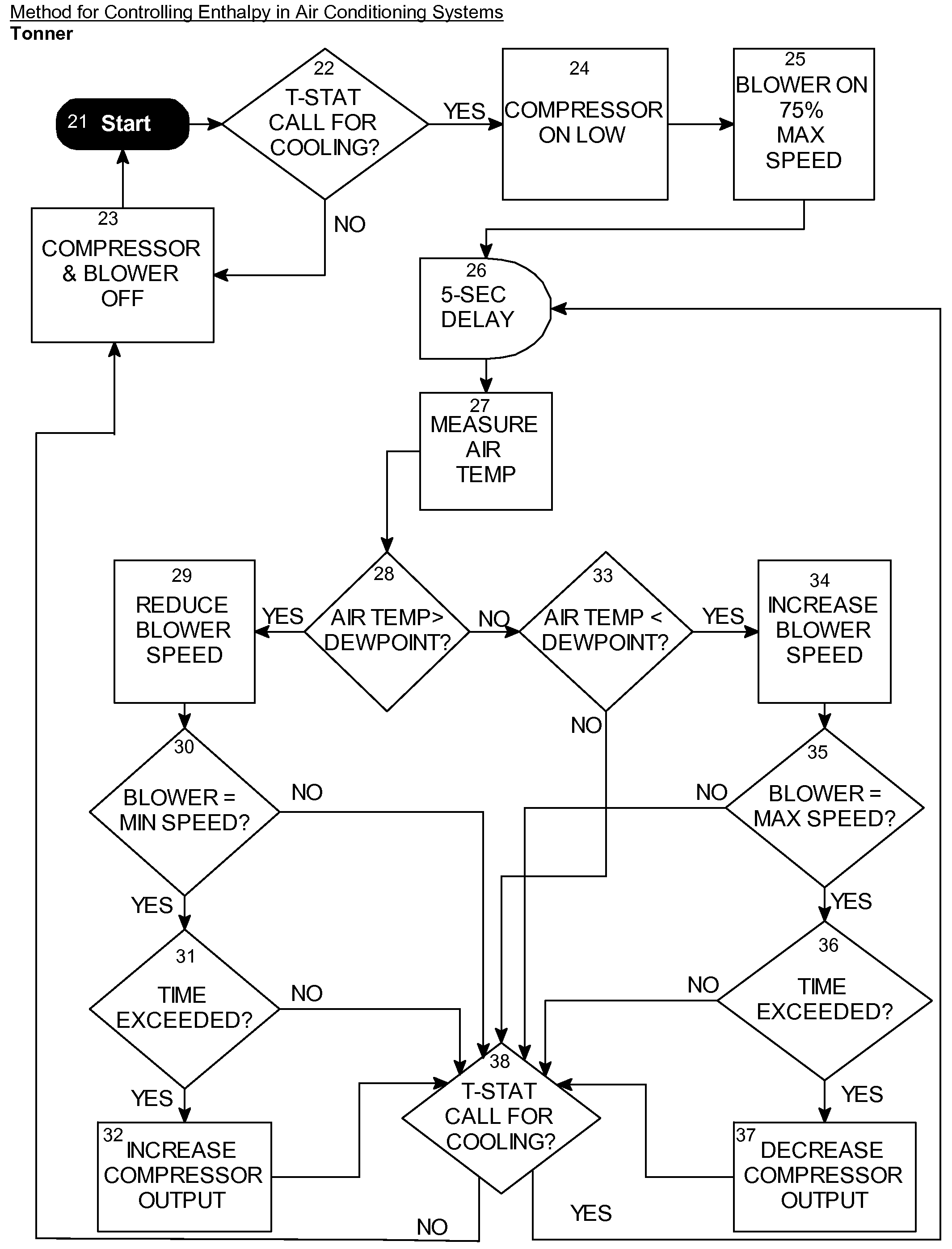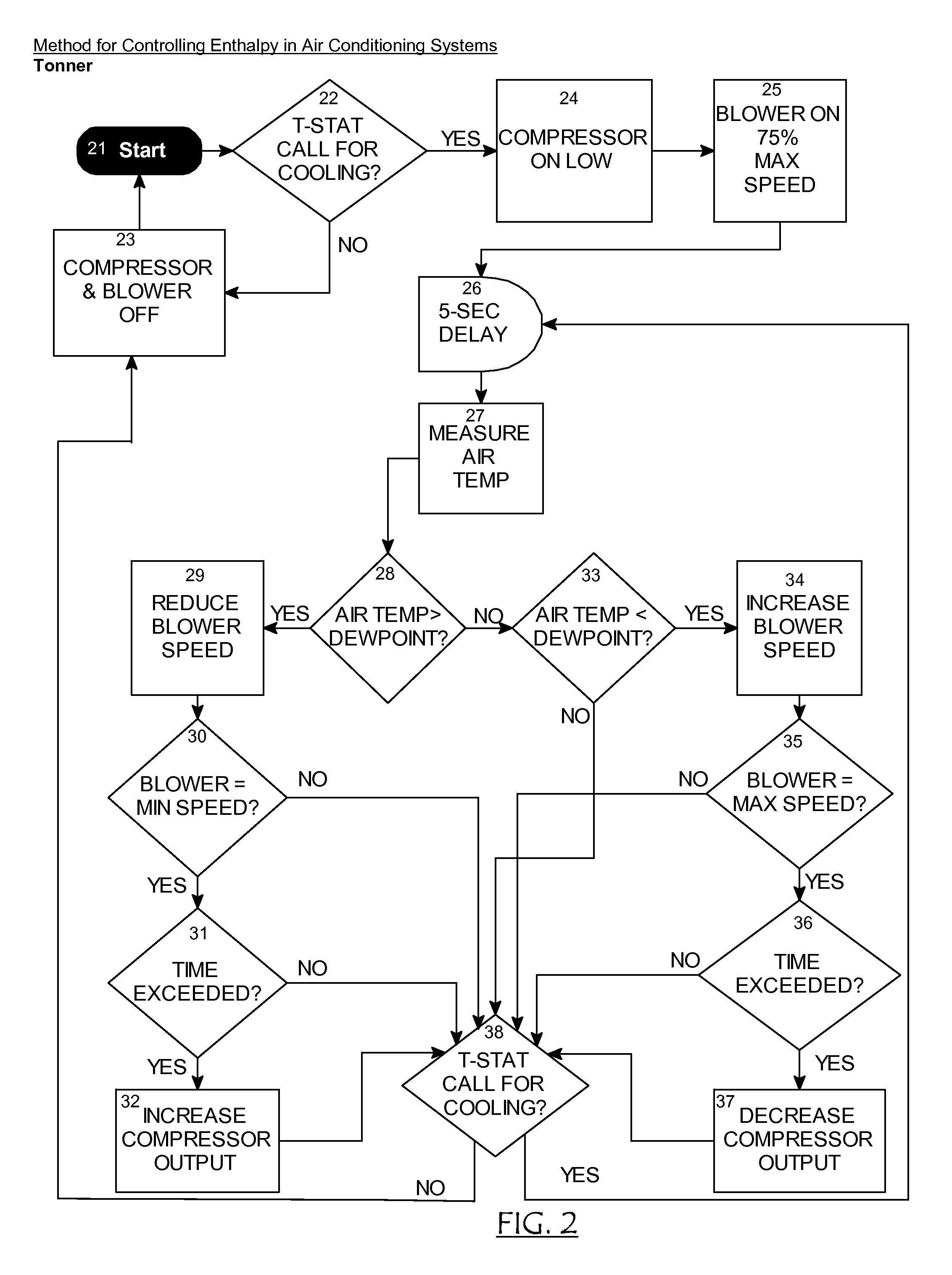Method for controlling enthalpy in air conditioning systems
a technology of air conditioning system and enthalpy, which is applied in the direction of static/dynamic balance measurement, heating type, instruments, etc., can solve the problems of ballard not addressing enthalpy or humidity control, and achieve the effect of reducing aspergillus repens and reducing some of the causes
- Summary
- Abstract
- Description
- Claims
- Application Information
AI Technical Summary
Benefits of technology
Method used
Image
Examples
Embodiment Construction
[0030]Now, with reference to FIG. 1 there is disclosed an air conditioning system which is well known to those skilled in the arts. Signal and control wiring is simplified for the purposes of this drawing in order to disclose the relationships of the devices and the method. Wiring means to provide electrical power are well known to those skilled in the arts and are not an object of this invention. Signal wires are also simplified and shown in greater detail in FIG. 3. The room thermostat 1(a) monitors room sensible air temperature and the desired room temperature set point as defined by the occupant. Upon detecting air temperature above the set point the thermostat 1(a) closes an internal switch, providing a control signal via thermostat wires 1(b) to enthalpy control unit 2. Enthalpy control unit 2, which is microprocessor based controller known to those skilled in the art, provides a control signal via the compressor control wires to the compressor actuating means 4. Compressor ac...
PUM
 Login to View More
Login to View More Abstract
Description
Claims
Application Information
 Login to View More
Login to View More - R&D
- Intellectual Property
- Life Sciences
- Materials
- Tech Scout
- Unparalleled Data Quality
- Higher Quality Content
- 60% Fewer Hallucinations
Browse by: Latest US Patents, China's latest patents, Technical Efficacy Thesaurus, Application Domain, Technology Topic, Popular Technical Reports.
© 2025 PatSnap. All rights reserved.Legal|Privacy policy|Modern Slavery Act Transparency Statement|Sitemap|About US| Contact US: help@patsnap.com



